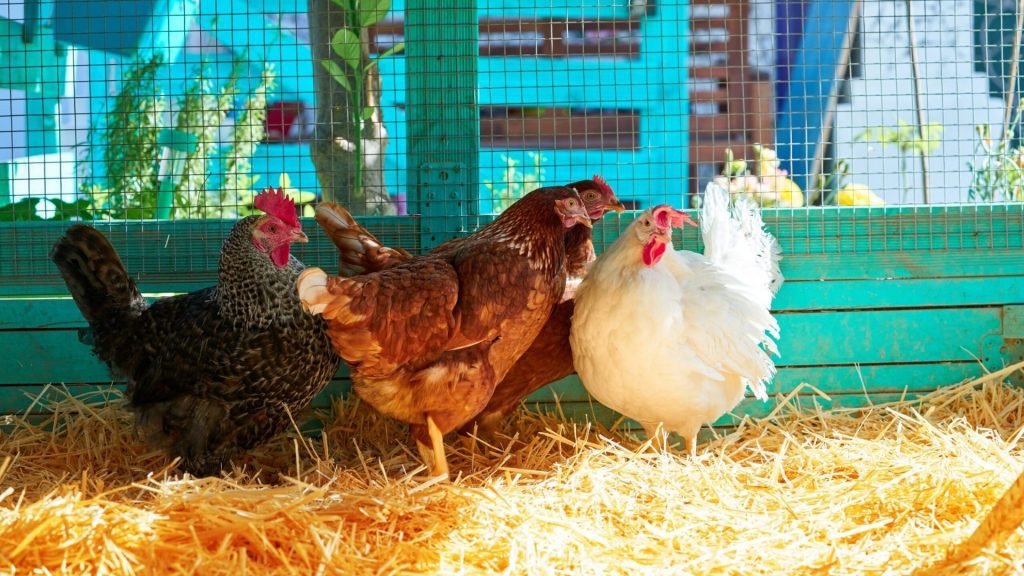For every chicken owner, the health and well-being of their flock is paramount. However, your chickens can be prone to various health issues, including infestations by a pesky parasite called gapeworm.
You must know how to check for gapeworm in chickens to keep your chicken safe. Also, you must understand that effective treatment options are essential aspects of sound poultry management.
This comprehensive guide will empower you with the knowledge and resources to manage gapeworm infestations effectively.
We’ll cover everything from identifying the infestation’s sign to exploring the range of treatment options available. So, let’s start:
Gapeworm 101: A Quick Refresher
Before delving into how to check for gapeworms in chickens, let’s take a quick refresher on what gapeworms are and how they affect your chickens.
Gapeworms, scientifically known as Syngamus trachea, are parasitic roundworms that typically inhabit the trachea or windpipe of birds. These parasites latch onto the lining of the trachea, leading to inflammation and causing a range of respiratory symptoms.
The infected chickens exhibit a gaping beak and show signs of breathlessness, giving this parasite its common name – gapeworm.
How To Check For Gapeworm In Chickens”
As chicken owners, you must understand your chicken’s possible health issues signs. One such concern is the gapeworm infestation. A parasitic condition can have severe implications for your flock’s health.
Below we will explain how to check for gapeworm in chickens. So, let’s start with:
1. Spotting Breathing Difficulties
Respiratory distress is among the earliest and most obvious symptoms of a gapeworm infestation. Your chicken may appear breathless or may gasp for air frequently.
Observe your birds during different activities. If you notice them often pausing to take deep breaths or seeming to struggle while breathing, it might indicate the presence of gapeworms.
2. Noticing A Gaping Beak And Neck Stretching
The gapeworm gets its name from a particular behaviour exhibited by the infected birds. They repeatedly open their beaks in a ‘gaping’ manner, like gasping for air. If your chicken constantly displays this behaviour, it’s a strong hint of a gapeworm infestation.
Additionally, neck stretching is another common symptom. This action, which involves the chicken stretching its neck upwards, may seem unusual and is typically accompanied by a gaping beak.
3. Identifying Coughing And Rattling Noises
Another essential sign to watch out for is persistent coughing. The chicken might make a throat-clearing noise or what sounds like a rattle.
This results from irritation caused by the gapeworms residing in the trachea. The birds’ effort to dislodge these parasites results in these coughing and rattling sounds.
4. Checking for Other Symptoms
While the above symptoms are the most common, other indications could suggest a tapeworm infestation. Check for some more symptoms of gapeworm in your chickens. Those are:
- Drop in egg production
- Weight loss
- Reduced appetite
In some severe cases, the infected birds may show weakness and lethargy.
Confirmed Case: What Now?
Once you’ve determined how to check for gapeworm in chickens and confirmed an infestation, acting quickly is essential. After confirming gapeworm in your chicken, take the actions below:
1. Veterinary Consultation
The first course of action should be a consultation with a veterinarian. The vet can confirm the diagnosis for gapeworm in chicken and prescribe the appropriate medication.
2. Medication And Treatment
Gapeworm infestations are typically treated with anthelmintic drugs. These medications kill the parasites, providing relief to your chickens.
3. Natural Remedies
Alongside prescribed medication, natural remedies can provide supportive treatment. However, these should be different from professional veterinary care.
How To Manage Gapeworm Infestations?
Preventing or managing a gapeworm infestation is often more manageable and less stressful for your flock than treating an established one. Following the ways below you can safeguard your chickens:
1. Regular Deworming
Regular deworming can help keep gapeworm and other parasites at bay. Consult your vet to establish a deworming schedule suitable for your flock.
2. Maintain A Clean Coop
A clean coop is your best defence against many poultry parasites, including gapeworms. Regularly clean and disinfect your chicken coop to minimize the risk of infestation.
3. Provide A Balanced Diet
Providing your chickens with a well-balanced diet is another preventive measure. Good nutrition enhances your birds’ immune system, making them less susceptible to infestations like gapeworm. Make sure their diet includes essential vitamins and minerals.
4. Quarantine New Birds
If you bought any new chicken from the market or elsewhere, keep them in quarantine. Keep that quarantined bird with your flock after keeping them isolated for a few weeks.
Through the quarantine time, you can observe your bird’s illness or infestation signs before they interact with the rest of your flock.
5. Limit Access to Snails, Slugs, and Earthworms
Since snails, slugs, and earthworms can act as intermediate tapeworm hosts, limiting your chickens’ access to these creatures is a good idea. Keep your coop and run clear of these potential carriers to minimize the risk of infection.
6. Educate Yourself
Lastly, education is an essential part of preventing and managing gapeworm infestations. The more you know about how to check for gapeworm in chickens, the better you’ll spot potential problems and take action early.
Final Thought
Knowing how to check for gapeworm in chickens, recognizing the signs of infestation, and understanding the treatment options can help you keep your flock healthy and happy.
Through regular deworming and coop maintenance, prevention remains the most effective strategy in managing gapeworm infestations. Stay vigilant, stay informed, and maintain a healthy, gapeworm-free flock!



